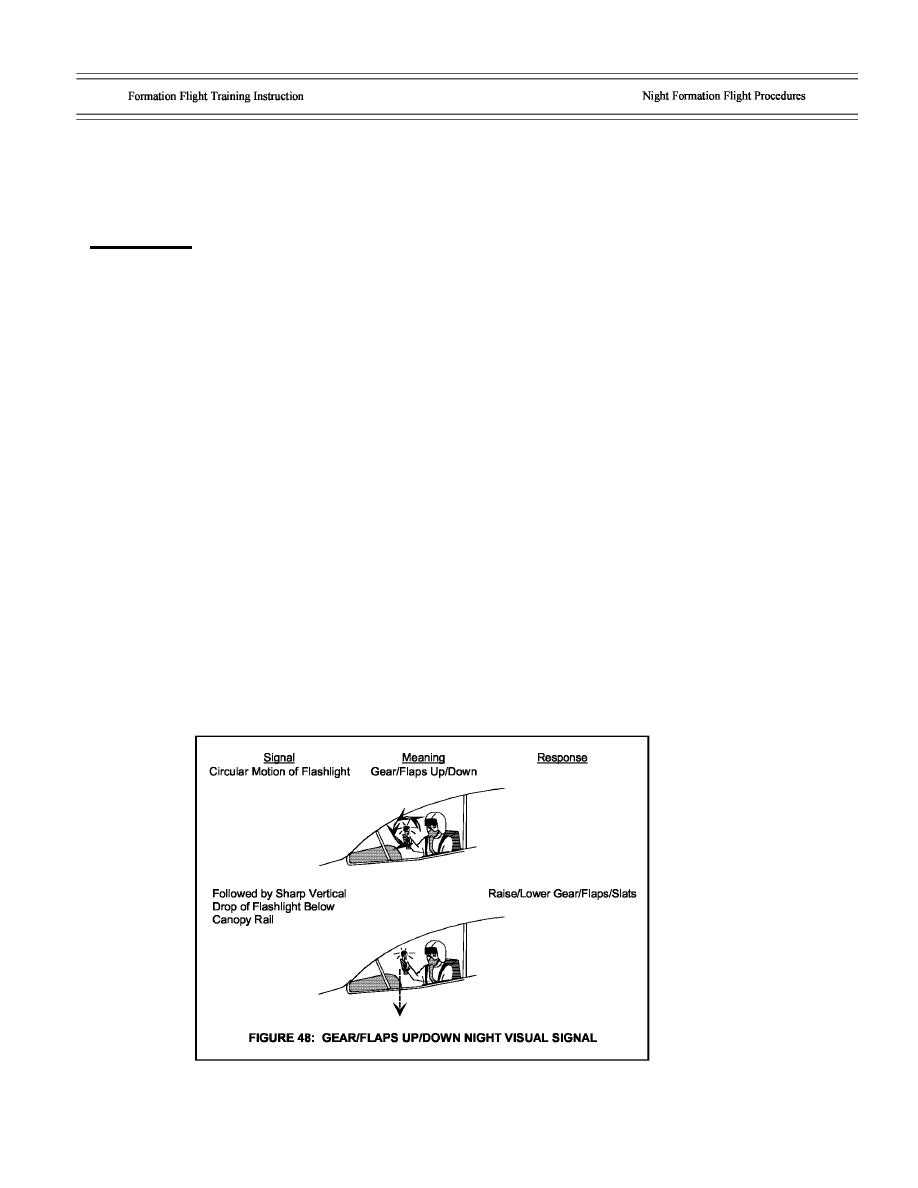
DRAFT
LOST SIGHT
The aircraft who has lost sight transmits "[call sign], lost sight." The other aircraft either calls a visual and directs
the join-up or confirms mutual lost sight. If mutual lost sight exists, the lead directs a TACAN rendezvous. If
NORDO, the flight performs the briefed lost comm/lost sight procedures.
APPROACHES
NIGHT SECTION PENETRATION WITH INSTRUMENT APPROACH
The procedures for a night section approach are very similar to the day procedures. The lead will extinguish his
landing light while the wingman's remains on. (Consideration may be given to extinguishing both landing lights
when in IMC conditions as the landing light tends to cause disorientation.) Additionally, all configuration changes
are transmitted over the radio as described in the day procedures section.
A night section approach may conclude in any manner that a day approach would. (Section missed, split for
landing, or touch and go rejoin.) Procedures are similar, however, configuration changes will of course be given
over the radio. Lead may signal the wingman to detach for landing by switching his lights to bright and steady
with anti-collision on, while turning smartly away from the wingman.
SECTION OVERHEAD ENTRY (BREAK)
The nighttime procedures for the section overhead entry break are very similar to daytime procedures. However,
the airspeed for the break should be a 300 KIAS level pull. Signal the break by turning exterior lights to bright and
steady and the anti-collision lights on. The flight then breaks ensuring a level break to arrive at the proper abeam
position.
SECTION INSTRUMENT APPROACH WITH WINGMAN NORDO
To signal the lead that he is NORDO, the wingman switches his external lights to bright and flashing. In VMC
conditions at night, the lead aircraft will most likely bring the NORDO wingman into the overhead. The lead will be
responsible for coordinating the NORDO wingman's permission to land with tower via the radio. At military
airfields, the NORDO wingman should expect cut-lights or ALDIS lamp signals as in the day. If a section
approach is required, the lead aircraft will signal section dirty-up for the approach by using his flashlight. The
signal will be a circular "cranking the gear" movement. He should repeat the circling motion three times, pausing
on the final rotation at the top of the circle and then dropping the light smartly below the canopy rail. This signals
the wingman to lower landing gear and select the standard half flaps setting for approaches.
Page 58
DRAFT



 Previous Page
Previous Page
